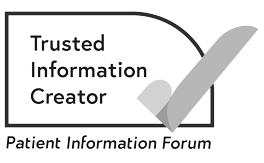Herb and plant extracts
About herb and plant extracts
There are different types of therapies which use herb and plant extracts. We have information about:
- aromatherapy
- flower remedies
- herbal medicines
- mistletoe.
You can buy some of these therapies in shops, on the internet, or from nutritionists and herbalists. They are usually taken by mouth, but may also be oils and creams you apply to the skin.
There is no medical evidence that flower, plant, or herbal medicines have any effect on cancer. But some people may find using these therapies helps with some symptoms or side effects.
If you are thinking about taking a herbal therapy or already take a herbal treatment, it is important to talk to your cancer doctor, specialist nurse or pharmacist. Herbal medicines are not recommended during cancer drug treatment. It is important to follow your doctor's advice.
Related pages
What is aromatherapy?
Aromatherapy is the use of concentrated natural oils extracted from plants. They are called essential oils. People believe that using these oils can help you feel better and improve your well-being.
Aromatherapy may be used with other complementary therapies such as massage. The oils may also be used:
- in baths
- as creams
- through diffusers
- in nasal inhalers (aroma sticks).
An aromatherapist will choose the oils they think will benefit you the most. For example, if you are having difficulty sleeping, they may choose an oil that is thought to help with relaxation and sleep.
Studies into the use of aromatherapy have shown varying results. Some studies have suggested that people using aromatherapy were less anxious, or had improved sleep and well-being.
You can buy essential oils in shops and online. But it is important to ask a qualified aromatherapist for advice before using essential oils at home. Some essential oils may interact with other medicines. It is important to talk to your cancer doctor if you wish to try aromatherapy. You also need to tell an aromatherapist about any treatment you are having or have recently had.
Aromatherapy oils need to be used with care as they are very concentrated and may cause harm if used incorrectly. They should only be used externally and be well diluted.
The International Federation of Aromatherapists has more information on its website, and a register of qualified aromatherapists. You can search this to find one in your area. The Complementary and Natural Healthcare Council (CNHC) also has a register of qualified aromatherapists.
Flower remedies
Flower remedies are a type of essence therapy. Essence therapies use liquids that are thought to capture the healing properties of flowers, plants or other naturally occurring things.
Flower remedies do not treat cancer. They are available in shops and online.
The most well-known essence remedies are flower remedies. They are prepared by placing flower heads into spring water under direct sunlight, or heating the plant in spring water. The plant material is removed. The water is then diluted with more water, or with alcohol (usually brandy). You take the remedy as a liquid.
Flower remedy practitioners believe they can help treat different emotional states. Some believe they can boost your immune system, but there is no evidence to support this.
Flower remedies are considered safe. Some people feel they help reduce anxiety and help them feel better.
Flower remedies are often diluted in alcohol, so if you do not drink alcohol you may choose not to use them.
Herbal medicines
Herbal medicines use plants or plant extracts to treat illnesses and promote health. Herbs may be used as part of traditional Chinese medicine. There are many different herbs that are used as herbal medicines.
Herbs can be:
- boiled in water and drunk as a tea
- mixed in an alcohol solution
- made into tablets, creams or ointments.
Examples of commonly used herbs:
- Ginger, which can be used to relieve feelings of sickness (nausea).
- St John’s wort, which can be used to treat a low mood and mild to moderate depression. It can interact with many prescription medicines. Always check with your cancer doctor or pharmacist before using it.
Taking herbs during cancer treatment
Some herbal therapies can interact with cancer treatments. For example, some can make cancer treatments less effective or increase their side effects. Examples include the following:
- St John’s wort affects many prescribed medicines. It can reduce the effectiveness of the chemotherapy drugs irinotecan and docetaxel.
- Green tea supplements may make the targeted therapy drug bortezomib (Velcade®) less effective. They can also increase the side effects of the chemotherapy drug irinotecan and the hormonal therapy tamoxifen.
- Garlic supplements and evening primrose oil may affect blood clotting. You should not use them before having surgery, as they may increase the risk of bleeding.
A herbal medicine may contain many substances. You may not know what all the active ingredients are. This means it is not possible to know all the possible effects the herbal medicine could have on other medicines or treatments.
Doctors usually advise that you should avoid herbal medicines for a few weeks before, during and after cancer treatment.
Safety
If you take herbal medicines or are interested in taking them, it is important to talk to your cancer doctor or pharmacist. They need to know all the medicines you are taking and whether they are prescribed.
People may feel that taking herbal medicine will be safe as herbs are natural products. But this does not mean they are always safe. Natural substances can have strong side effects. Many medicines, including some chemotherapy drugs, are made from plants.
Something that might be safe in lower doses can be harmful in higher doses. For example, drinking green tea is generally safe but green tea supplements can contain much higher doses of certain substances. As well as interacting with some cancer drugs, green tea supplements can sometimes cause serious liver problems.
It is important to be aware of any side effects that herbal medicines may cause. And remember that some herbal medicines could interact with any medicines you take.
Traditional herbal registration
If you choose to take herbal medicines, it is best to buy only products that have the traditional herbal registration (THR) certification mark. This is a quality mark that shows the products have been tested for quality and safety. Herbal products that you buy in health food shops and pharmacies must meet quality standards.
Herbal products that are sold online or made for personal use do not have the THR mark. There are no checks on how these products are made or guarantees of what they contain and in what dose.
If you are visiting a herbalist, check that they are registered with an accredited body.
If you want to learn more about herbs, the Memorial Sloan Kettering Cancer Centre provides information about individual herbs, their uses and possible side effects.
Mistletoe (Iscador®, Eurixor®)
Mistletoe can be taken by mouth or as injections. It is sometimes described as herbal medicine.
Studies suggest that mistletoe may:
- improve your quality of life
- reduce the side effects of chemotherapy, radiotherapy and some targeted therapies.
Some research studies have looked at whether mistletoe is linked to longer survival after a cancer diagnosis. The results are not clear because the studies are often poor-quality. For example, the studies only involved small numbers of people, and usually only included people who were also having conventional cancer treatment.
There is currently no reliable evidence to show that mistletoe will treat cancer. It is not advisable to use mistletoe as an alternative to cancer treatments.
Safety
It is important to check with your cancer doctor if you are thinking of using mistletoe.
Mistletoe may affect the immune system. This means it could reduce the effectiveness of some medicines. This includes immunosuppressants, which people take after a donor stem cell or bone marrow transplant.
Large doses of mistletoe may cause more serious side effects. When given as an injection under the skin, mistletoe may cause mild swelling, itching and pain around the injection site. Rarely, it can cause allergic reactions. These can be serious in some people.
About our information
This information has been written, revised and edited by Macmillan Cancer Support’s Cancer Information Development team. It has been reviewed by expert medical and health professionals and people living with cancer.
-
References
Below is a sample of the sources used in our complementary therapies information. If you would like more information about the sources we use, please contact us at informationproductionteam@macmillan.org.uk
Balneaves LG, Watling CZ, Hayward EN, Ross B, Taylor-Brown J, Porcino A, Truant TLO. Addressing Complementary and Alternative Medicine Use Among Individuals With Cancer: An Integrative Review and Clinical Practice Guideline. J Natl Cancer Inst. 2022 Jan 11;114(1):25-37. Available from: doi: 10.1093/jnci/djab048. PMID: 33769512; PMCID: PMC8755493. [Accessed September 2023].
Integrative Medicine [Internet]. Memorial Sloan Kettering Cancer Center. 2020. Available from: www.mskcc.org/cancer-care/diagnosis-treatment/symptom-management/integrative-medicine [accessed September 2023].
NICE. Guidance on Cancer Services Improving Supportive and Palliative Care for Adults with Cancer. The Manual National Institute for Clinical Excellence [Internet]. 2019. Available from: www.nice.org.uk/guidance/csg4/resources/improving-supportive-and-palliative-care-for-adults-with-cancer-pdf-773375005 [accessed September 2023].
Overview of complementary, alternative, and integrative medicine practices in oncology care, and potential risks and harm. UpToDate. Available from: www.uptodate.com/contents/overview-of-complementary-alternative-and-integrative-medicine-practices-in-oncology-care-and-potential-risks-and-harm?source=mostViewed_widget [accessed September 2023].
Date reviewed

Our cancer information meets the PIF TICK quality mark.
This means it is easy to use, up-to-date and based on the latest evidence. Learn more about how we produce our information.
The language we use
We want everyone affected by cancer to feel our information is written for them.
We want our information to be as clear as possible. To do this, we try to:
- use plain English
- explain medical words
- use short sentences
- use illustrations to explain text
- structure the information clearly
- make sure important points are clear.
We use gender-inclusive language and talk to our readers as ‘you’ so that everyone feels included. Where clinically necessary we use the terms ‘men’ and ‘women’ or ‘male’ and ‘female’. For example, we do so when talking about parts of the body or mentioning statistics or research about who is affected.
You can read more about how we produce our information here.




